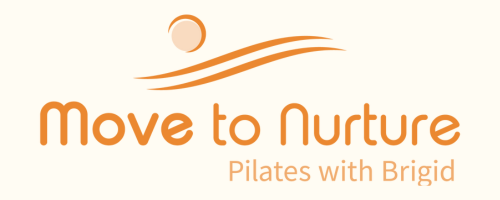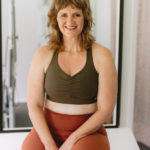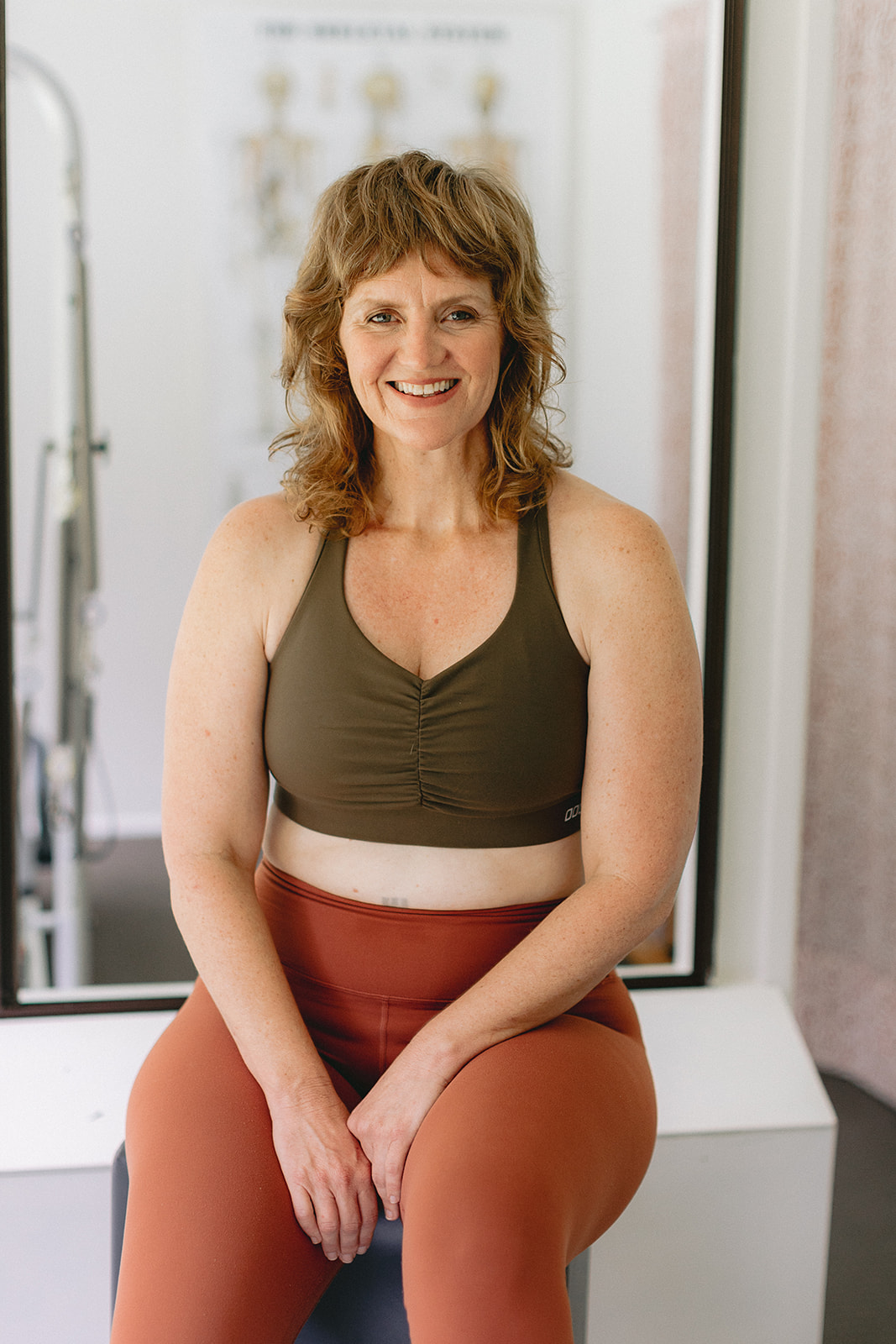An older woman with good balance is unstoppable. You know it’s true. As we age our balance can deteriorate for a number of reasons. This can reduce our body confidence and stop us maintaining and building strength. There are many factors that contribute to the balance system and lots of things to consider when wanting to improve your balance. This article will outline the systems in the body that contribute to good balance and then cover ideas for working to improve your balance at home and in a Pilates studio.
What makes good balance?
Having good balance relies on three senses in the body operating well and interacting together, these are:
Visual – what we can see
Proprioception – our perception of where each part of our body is in space
Vestibular – how our head is sitting in space and our head righting response in relation to gravity
When one of these senses is not functioning well or is compromised the others tend to compensate. The sense that tends to suffer most as people age is proprioception. As we move less and take on less physical activity the brain has less input as to where each of joints are in space. The more time we spend sitting, the less we activate the pathways to the brain from each of our joints moving through space.
We begin to rely more and more on the visual system which is intimately linked to the vestibular system via the vestibular ocular reflex or the ability of our eyes to focus as we move our head. The trouble is that our visual system can also deteriorate as we age.
It is easier to stimulate the proprioception system than to repair the visual system. For this reason it is important not to rely too much on the visual system for balance. And that is where targeted movement and exercise can develop proprioception and muscle strength to improve balance. Strength on its’ own is not enough to improve balance, improving proprioception is essential.
How to improve your balance – a four step approach
If we take what we know about the senses of the body that contribute to good balance and combine this with an understanding of body mechanics there are a number of things you can do to improve your balance. Many of these can be done at home and some will require specific equipment and guidance in a Pilates studio.
Step 1 – Foot strength
Our feet are our foundation and when you want to improve your balance this is the place to start. We love to overlook our feet (literally!) because they are right under our noses and it is so obvious they are important for our movement. But our feet are often not what we want them to be. Usually our feet spend most of there time in shoes, they lose there agility to cope with different surfaces.
The very act of wearing shoes, makes our feet, weaker. So, to build balance, we start from the foundation. Yes, I want you to kick off your shoes and spend more time barefoot. If this causes you pain you may need to seek some advice and support for this. But generally, spending a little more time each day, bare feet will bring you great benefits for your balance.
This is a great exercise for our feet, that helps bring back some of the suppleness, articulation of the many joints in the feet, and pliability to your feet.

Fingers through toes
Bring one foot to the opposite knee and thread your fingers through your toes. This may be quite difficult and painful, so go gently. You can then lift and drop your toes.
Step 2 – Hip strength and alignment
Hip strength and alignment is directly related to our feet, when our feet are weak or not able to respond to the terrain, our hips immediately compensate to find and create stability for our body. This results in tight and immobile hips. This is why we started with the feet, the exercises in the feet will then support your alignment of your hips.
One of the key things to improve your balance is hip alignment or more specifically the position of our thigh bones in our pelvis. When we are in heeled shoes this pushes the top of our thigh bones (femur heads) forward in our hip. This makes it more difficult for us to use our bottom muscles and the backs of our legs. This can cause real strain on hips, and issues for posture, over time.
Once you are able to get your thigh bones to slide back in your pelvis you will begin to feel your muscles in your bottom and the back of your legs working harder. The first place to start is with the hip crease. This is called a foundational movement because it is a foundation for living. They’re also called functional movements, because we use them every day for usual functions getting down and up from the toilet getting down and up from chair, bending to pick something over from the floor.
Practicing getting your thighs to slide back in your pelvis will help you maintain healthy strong hips and they will be a strong foundation for your balance. When the feet are doing their job to respond to the terrain and thighs are rolling well in the hip joint, then the back of your body can be as active as the front of your body when it comes to your balance.
Here is a great exercises for encouraging the femur heads or the top of your thigh bones to slide and roll back in the hip joint.

Pullbacks
Start on your hands and knees, hands under shoulders knees under hips with a long spine. Draw you bottom back to your heels without bending or buckling your spine. Repeat 15 – 20. Go slow to make sure you are not bending your spine. If you do make the movement smaller to keep your spine long. This encourages the top of your thigh bone to glide back in your hip joint.
Step 3 – Core muscles
core muscles strength and coordination is a key part of balance. It is the part that a lot of people focus on to the exclusion of all else. In my approach to balance core strength is just one key part of improving your balance.
When I talk about core muscle strength for balance. I don’t mean a great six pack. What I mean is, being able to activate the very deepest abdominal muscles to stabilise your bones (your skeleton).
Practicing this very deep, stability, doesn’t come from doing a lots and lots of sit ups or ab crunches or exercises that are in a typical gym workout. These smaller stabilising muscles need exactly the right load, and to be in the right position to be activated.
This is why we look at alignment from the feet to the hips and into the core, but also why we work, gently with the load, because if you overload these muscles, they stop working, and the big muscles take over. And when that happens you lose the deep and subtle ability to stabilise your skeleton.
Here is an exercise that will teach you core coordination or how to coordinate your core muscles with your breath. We use the breath, initially to teach the sensation of the core muscles firing. And then as you get more comfortable with that you can do the core firing independently of the breath which is ultimately where you want to be.
This exercises may feel very easy although there is a lot to think about. They’re not the sort of muscles that will give you a deep burn straightaway. This is a more subtle sensation than that. And it is the subtlety that allows you to develop better control of your deep muscles to stabilise your skeleton and improve your balance.

Knee drop
Lying on your back, soles of the feet to the floor, knees bent, neck and head relaxed. Drop on knee out to the side, do not let it drop all the way to the floor. You want to keep your pelvis still while you move the knee. If you feel your pelvis tip as you drop your knee, make the movement smaller until your pelvis can sty still while you drop your knee. Repeat on both sides 15 -20. Go slowly and move with intention and control.
Step 4 – Neck strength and head alignment
In our current lifestyle we spend a lot of time in front of screens or driving cars. It is very common for people to develop forward head posture, this is where your chin, and head starts to slide forward of your body, and the back of your neck needs to become very strong and often quite tight to stabilize your head.
When people take this into an exercise setting, often they continue to hold this forward head posture. Sometimes they’ll get a sore neck from that, but often they are trying to strengthen their neck. To reverse forward head posture we need to strengthen the front of the neck, the deep cervical flexors, in the front of the neck, rather than the sternocleidomastoids that attach the back of the skull to the sternum and collarbones at the front.
Strengthening the front of the neck will re-align your head over your spine, it will take some of the pressure off your upper back and shoulders. This will mean you won’t have the weight of your head pulling you forward and making it more difficult to balance.
Here is an exercise to strengthen the cervical flexors at the front of your neck and some cues or ways to remember about how you are holding your head throughout the day.

The head hover
Lie on your back, soles of the feet on the floor and knees bent, head and neck relaxed. Bring one hand to the top pf the back of your head and grab your hair (if you have it!). Pull the top of your head gently with your hand as you tuck your chin, tuck it as deeply as you can. Begin to gently hover your head only about an inch off the floor on each exhale, keep tucking your chin as deeply as you can. The back of your neck should feel relaxed, the front of your neck should feel like it is working. If you get tight and sore in the back of the neck STOP. Do about 8-10.
Now challenge your balance!
Once you have explored some of the exercises from each of the steps above, you can challenge your balance. Start by standing on one leg, if this is easy close your eyes. If this is easy come into a deep squat and come on to one leg and close your eyes! Let me know how you go!
I will be running a COMMUNITY BALANCE CHALLENGE in July where we all get to work on our balance together on Facebook. Don’t miss out on this! Sign up below to hear more.
I am Brigid Pearse a certified Pilates instructor, an ex-dancer and a mum. I run a fully equipped Pilates studio from my home in Lennox Head and I run community Pilates mat classes in Byron Bay, Ballina and online. To receive regular body wisdom sign up below.






0 Comments